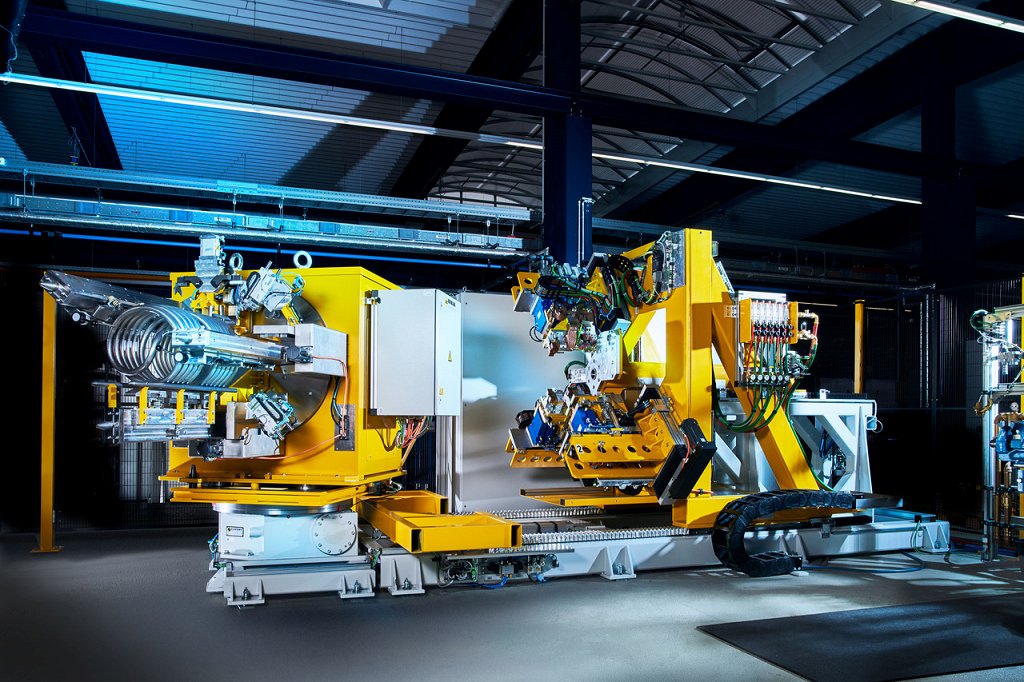Bosch increases efficiency when welding heating coils
29.01.2024
The automated system developed by NIMAK enhances production by offering increased speed, greater flexibility, and a more sustainable process.
 The new NIMAK welding system used at Bosch Home Comfort in the production of heating coils. The clamped workpiece on the left is brought into the exact welding position via a turntable. Photo: NIMAK GmbH
The new NIMAK welding system used at Bosch Home Comfort in the production of heating coils. The clamped workpiece on the left is brought into the exact welding position via a turntable. Photo: NIMAK GmbH
At Bosch Home Comfort, manufacturer of heating and air conditioning technology and formerly known as Bosch Thermotechnik, an automated welding system from NIMAK has recently ensured even better performance in the production of heating coils. "By revamping the existing technology, we have succeeded in producing the essential components for heat exchangers in domestic heating systems faster and also more sustainably," reports Kay Nagel, Head of Sales at the company, which is one of the world's leading suppliers in the field of resistance welding technology. This involves welding three retaining rods onto the coiled tubing of a heating coil. This is essential to prevent instability, similar to how a spring might suddenly uncoil. Such measures ensure that the connection geometry remains uniformly consistent.
The decisive factor here is to use a defined tension on the spiral to position the desired distance between the individual spirals and thus the intended size. As this varies depending on the model of the heating system, the NIMAK system has various interchangeable sets that accommodate the respective heating coil. Servo-driven adjustment units and three adjustment slides ensure that the heating coil is precisely adjusted to the required diameter. Depending on the design, an internal or external tension is generated, which in turn determines the size of the spiral. The retaining rods attached on the basis of medium frequency welding then keep this constant.
To accomplish this, an employee must first manually insert the heating coil into the system's clamping device, close it at both ends of the tube and insert the three retaining rods. Everything else is fully automatic: the system swivels the spiral into the processing position, closes an additional support device and closes the three retaining rods. This is followed by the joining process, in which three welding heads move to the first position and simultaneously join the rods to the first coiled tube. Once this has been done at all the required welding points, the system moves to the starting position and the employee can remove the finished welded heating coil.
Electrical systems replace hydraulics
The new system has transitioned from hydraulic to fully electric power. A total of 16 user-friendly programmable axes are used. Nagel asserts that moving away from hydraulics not only reduces errors due to oil contamination, leading to increased reliability, “but also notably decreases cycle times with servo drives. And most importantly, this advancement has allowed us to exceed Bosch's requirements by an additional ten percent."
Compared to the previous production process, with the new NIMAK system Bosch can now manufacture its heating coils more precisely, faster, more dynamically and more flexibly. In addition, the servomotors now in use enable more sustainable production than before. "Not only are they considerably more energy-efficient," emphasizes Nagel, "in principle, they can even be powered by renewable energies."













































